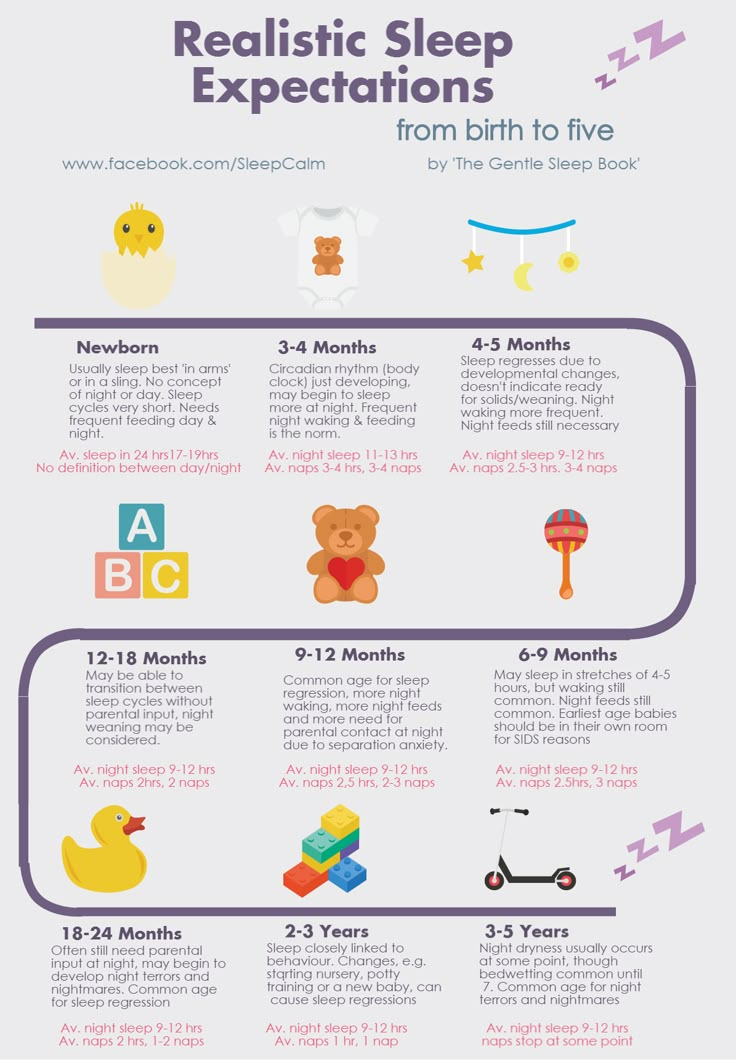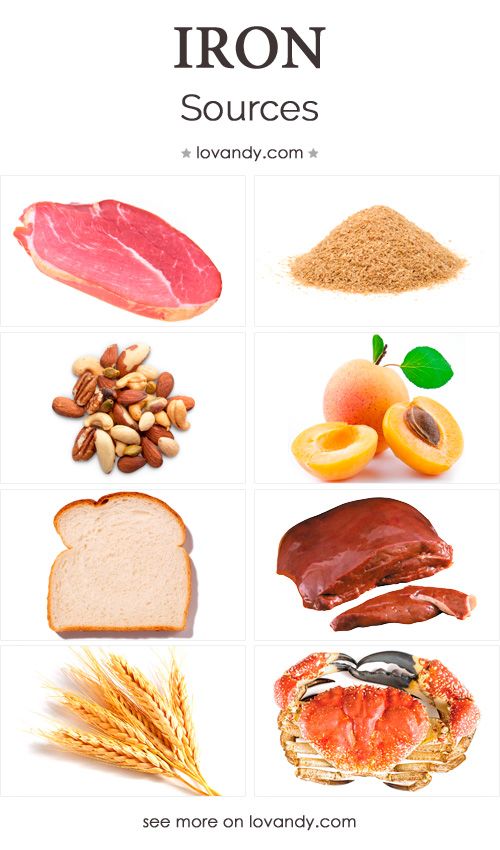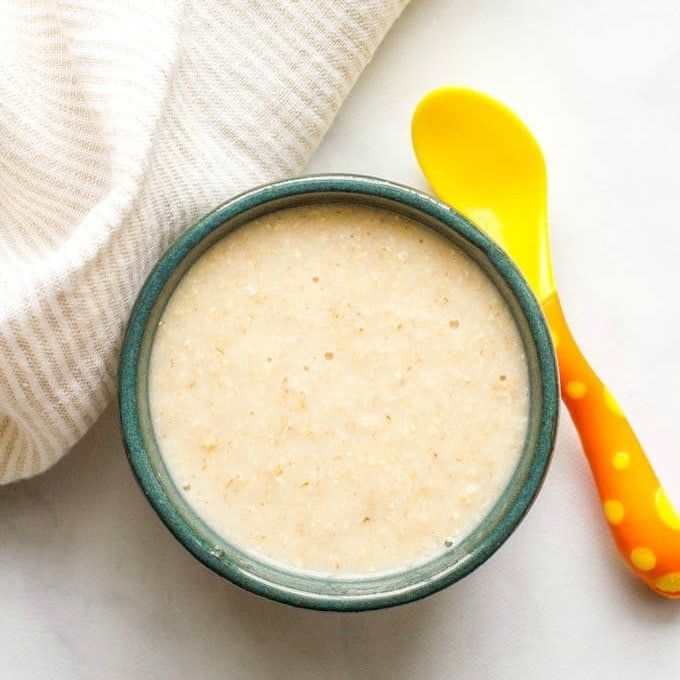6 months old baby food routine
6-month-old feeding schedule: Timetable
A baby’s 6-month birthday marks an important transition as many infants are ready to start trying solids at this point.
While breast milk or formula should still form the core of a 6-month-old’s diet, some caregivers find that a child’s feeding schedule shifts as they begin eating purees and other solids.
Share on PinterestWhen a baby reaches 6 months of age, purees and other solid foods can usually become part of their diet.Babies typically need to eat every 2–3 hours, five to six times during the day.
It is normal for a baby’s schedule to change from day to day, or for babies to eat different amounts of food each day.
Caregivers can follow a baby’s cues, even if they have established a schedule already. A parent or caregiver does not need to deny food to a baby just because it has already eaten.
Introducing solids
The American Academy of Pediatrics (AAP) advise that parents exclusively breastfeed infants for about 6 months if possible. By the time a baby hits their half birthday, they may be ready to try solids.
A baby may be ready for solids at 6 months if:
- they have good head control
- they can hold their head up for extended periods
- they can sit up with no or very little assistance
- they no longer have the tongue thrust reflect to push food out of the mouth with the tongue
- they show interest at mealtime and lean toward food if a caregiver offers it
At this age, breast milk or formula is still a baby’s most important form of nutrition and solids are an addition.
Not all 6-month-olds are ready for solids. If a baby shows no interest, a caregiver can wait a few weeks and try again.
Giving a baby 1–2 tablespoons of iron fortified cereal or fruit or vegetable purees per feeding can be a good place to start.
Gradually increasing this as the baby’s interest and appetite increase can follow.
To ensure a baby eats sufficient food, the adult can breastfeed or give a bottle before offering solids.
Caregivers can give solid food as a supplement each time they nurse the baby or give a bottle. Or, they can include the baby in family meals by giving solids at mealtime.
At 6 months of age, when an infant may begin to want solids, a caregiver can offer these just once per day.
Choosing a time of day when the caregiver is relaxed and not pressed for time, and the baby is not overly hungry, fussy, or tired often works best.
Once a baby is enjoying their once-a-day solids, the frequency can increase to two and then three times a day.
There is no “right” schedule, but caregivers should plan to increase the number of solids babies get gradually.
At 6 months, the goal is not to introduce new foods and eating habits. Similarly, there is no need to force a baby to eat solids or restrict new food if a baby indicates they want more.
Regardless of their size and eating habits, babies need access to an expanding variety of solid foods.
Most babies will need to try new foods several times before they feel comfortable eating them. It is fine to let a child eat at their own pace, in the way that feels right to them.
It is fine to let a child eat at their own pace, in the way that feels right to them.
It is acceptable at this age for a baby to play with their food since this is a way of exploring new things.
Breast milk and formula
Breast milk or formula remains the most important food at 6 months of age. The easiest way to ensure a baby eats enough is to nurse or formula feed them on demand when they show signs of hunger.
Research supports the value of feeding on demand.
A longitudinal study of 10,419 children found better academic achievement and a four-point Intelligent Quotient (IQ) advantage at 8 years old among children whose caregivers fed them on demand.
However, the caregivers of these children got less sleep and had lower overall well-being.
These results may point to adults finding a happy medium, such as steadily shaping the baby’s preferred schedule into one that works for them.
In general, caregivers should plan to breastfeed babies 3 to 5 times per day, and sometimes more. However, babies vary greatly and every 3–4 hours is common, which can amount to up to eight times in 24 hours.
However, babies vary greatly and every 3–4 hours is common, which can amount to up to eight times in 24 hours.
Some babies prefer cluster feedings, during which they nurse several times in a short period. Growing or sick babies may also nurse more frequently.
If a baby has formula, giving 24–32 ounces of iron fortified formula spread over five or six feeds per day is typical. While some babies sleep through the night at 6 months, others will still wake or want to feed.
A nighttime “dream feed” around the time caregivers retire for the evening may help babies sleep longer.
Other liquids
Babies do not need juice at 6 months. The extra calories can decrease a baby’s appetite, and the sugar may damage a child’s developing teeth. Soda and other drinks are not healthful for babies.
Babies can have water beginning at 6 months, or when caregivers introduce solids, whichever is later. Introducing a cup of water along with solid meals may be helpful.
Around 6 months old, some babies begin transitioning from three or four daily naps to two. The baby might take a midmorning nap and a midafternoon nap. At this age, most babies need 12–15 hours of sleep per day, and naps usually last 1–3 hours.
The baby might take a midmorning nap and a midafternoon nap. At this age, most babies need 12–15 hours of sleep per day, and naps usually last 1–3 hours.
Caregivers are best finding a schedule that works for them and the child. Some children are used to falling asleep by nursing or with a bottle. Others happily doze off on their own.
A caregiver can follow the baby’s cues and work to adapt their needs to the family’s schedule slowly.
These feeding tips may help:
- Babies may be hungrier after waking from a long nap. This can be a good time to try solids after offering formula or breast milk to ease their initial hunger.
- There is no evidence that adding cereal to a bottle helps babies sleep longer. Doing so can increase their risk of choking.
- Babies must never have food without close supervision. nor have solids, even very thin purees, in bed.
Deciding what, when, and how to feed a baby can be challenging, especially during the transition to solids. As long as babies get regular breast milk or formula, caregivers do not need to rush the transition to solids or worry that babies are not eating enough.
As long as babies get regular breast milk or formula, caregivers do not need to rush the transition to solids or worry that babies are not eating enough.
Some babies take longer than others to embrace solids, while some will eagerly eat anything. The right schedule is one that works for the baby and family. This schedule may change over time which is also fine.
Food Ideas, Recipes & Tips
At the 6-month mark, your baby will be ready to start experimenting with pureed foods. But remember that we use foods here as supplements. Your child’s prime source of nutrition will still be infant formula or breast milk to support them nutritionally since they will be adapting to new food habits for up to two years. Most babies start with cereals, oatmeal, and rice for their first foods. But some skip straight to pureed vegetables, fruits, and meats.
If you want to learn more about feeding schedules along with delicious baby food recipes and tips, continue reading…
What to Feed a 6-Month-Old
When you first start feeding your baby, you don’t want to mix your breast milk with cereal.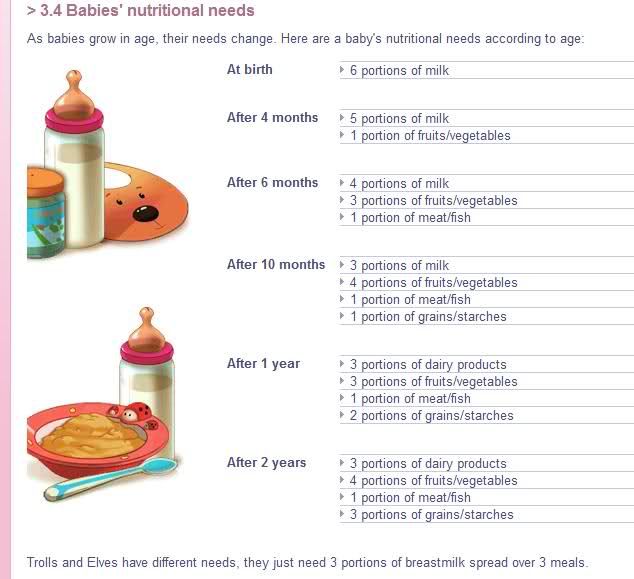 Most babies end up wasting it, which is why it’s a good idea to let them sample first. Mix a bit of water with your cereal and let your child taste it. If they like it, gradually add your breastmilk. Breastmilk mixed with cereals like oats provides iron for your baby. However, oats are bulky and fill the baby’s tummy quickly. Therefore, they can be started after your baby can digest basic cereals. Cereals serve as a nice transition to pureed and other finger foods as well. Finger foods can be added after the baby starts having some soft, cooked, small food particles other than the purees.
Most babies end up wasting it, which is why it’s a good idea to let them sample first. Mix a bit of water with your cereal and let your child taste it. If they like it, gradually add your breastmilk. Breastmilk mixed with cereals like oats provides iron for your baby. However, oats are bulky and fill the baby’s tummy quickly. Therefore, they can be started after your baby can digest basic cereals. Cereals serve as a nice transition to pureed and other finger foods as well. Finger foods can be added after the baby starts having some soft, cooked, small food particles other than the purees.
If you’re feeding your child cereal, see if they stick to one feeding for at least two weeks. After that, you can increase it to two feedings and then introduce new foods. Orange and yellow vegetables are what kids go for first, but some kids prefer bananas, which should be included in your baby’s diet, and cooked avocados for their first pureed foods. Wait for at least three days before giving your child a new food because that will help you pinpoint any food intolerances and allergies, which should be taken seriously. You must consult your pediatrician in the case of an allergy or food intolerance and take necessary precautions.
You must consult your pediatrician in the case of an allergy or food intolerance and take necessary precautions.
1. Fruits/Vegetables
For fruits and vegetables, here’s what you can feed your child:
- Bananas
- Avocados
- Tofu or sauteed cottage cheese
- Pumpkin
- Mashed or sliced sweet potatoes
- Boiled Beans
- Oranges
- Watermelon (seedless)
- Berries
2. Non-Vegetarian
Animal foods are a good source of iron, protein, amino acids, and key essential nutrients. Here are the foods you can add to your baby’s eating schedule:
- Scrambled eggs
3. Other Food Items
Other food items you can also add to the meal plan for your 6-month-old baby are:
- Cheese (plant-based)
- Butter (plant-based, in moderation)
- Muffins
- Lentil soups or broths
- Unsweetened yogurt (lactose-free)
How Much Milk Is Enough for a 6-Month-Old?
The quantity of milk you’re feeding your child will matter when you feed breastmilk or formula. Generally speaking, a formula-fed baby feeds four to five times a day, while breastfed babies will be fed five to six times a day. After your baby gets used to the feeding schedule, you can add solid foods to the food chart depending on the baby’s tolerance and acceptance of solids. When eating solids, it’s normal to cut down on breastmilk or infant formula since your baby may feel too full.
Generally speaking, a formula-fed baby feeds four to five times a day, while breastfed babies will be fed five to six times a day. After your baby gets used to the feeding schedule, you can add solid foods to the food chart depending on the baby’s tolerance and acceptance of solids. When eating solids, it’s normal to cut down on breastmilk or infant formula since your baby may feel too full.
Feeding Schedule for a 6-Month-Old
The key thing about sticking to a feeding guide is ensuring your child feels satisfied after every meal. And being consistent with your feeding times is a good way to stay on track. We’ve listed a few sample schedules to give you an idea about how much solid food you can feed your baby.
1. Schedule for Formula-Fed Babies
Here is a sample feeding schedule for formula-fed babies for your reference:
| Time | What to Feed |
| 7 AM | 6 ounces of infant formula. |
| 10 AM | Breakfast such as mashed fresh fruit or fortified cereals. |
| 2 PM | Lunch with a bottle of formula and a serving of pureed fruits and vegetables. |
| 5:30 PM | Two to three servings of fruits and vegetables (mashed or pureed). |
| 7 PM | For dinner, only infant formula before bedtime. |
2. Schedule for Breastfed Babies
You can use this sample feeding schedule for breastfed babies and alter it as per your child’s needs:
| Time | What to Feed |
| 7 AM | Nursing the baby for 20 minutes after waking him up. |
| 8:30 AM | Oatmeal cereal or a similar breakfast, along with a portion of fresh fruit. |
| 12:30 PM | Breastmilk feeding for 20 minutes. |
| 3 PM – | Lunch with a serving of vegetables (up to 3 ounces). |
| 5:30 PM | Breastfeed or a bottle of breastmilk. |
| 8:15 PM | Dinner, which includes two ounces of breastmilk mixed with oatmeal cereal and two ounces of pureed veggies. |
Foods to Avoid for a 6-Month-Old Infant
Most parents also wonder if they can feed all solid foods to their babies. The answer to this is yes, but not anytime soon. To be clear, here is a list of foods to avoid for your 6-month-old:
- Solid Foods in the Form of Big Chunks: Foods in big chunks, such as big pieces of carrots, cauliflower florets, etc., can be a choking hazard. Soft, boiled, small, or sliced pieces can be given rather than big chunks. If you think small pieces are also difficult for the baby to swallow, mash them further.

- Raw Milk: Raw milk or anything with lactose is a big no since 6-month-old babies can’t digest milk proteins.
- Raw Honey: Raw honey causes infant botulism as it contains spores or microorganisms. Because your baby’s digestive tract is still immature at this age, their stomach does not produce enough acids to fight bacteria in their digestive tract.
- Fish: Special varieties of fish like tuna or those with high levels of mercury and heavy metals are best avoided when your baby is weaning.
- Fruit Juices: Fruit juices contain zero fiber and concentrated sugars.
Baby Food Recipes for 6-Month-Olds
Here are some simple food recipes apt for a 6-month-old baby. They take a few minutes and can be made with a few staple ingredients. These will help you create your customized baby diet planner, too.
1. Banana Puree
Banana puree is one of the most popular foods for a 6-month-old baby. Be sure not to overdo it, though, since too much banana can cause constipation; a little bit is fine and is okay for a treat. Remember that any food that your baby can tolerate is fine to be given in moderation.
Be sure not to overdo it, though, since too much banana can cause constipation; a little bit is fine and is okay for a treat. Remember that any food that your baby can tolerate is fine to be given in moderation.
Ingredients
Here’s what you’ll need for this:
- Ripe bananas
- Breastmilk or infant formula
How to Prepare
Here is how you prepare it:
- Take a banana and a fork.
- Mash the banana and make a puree out of it.
- Add in a bit of breast milk or infant formula to thin down the consistency.
- Serve fresh.
2. Avocado Puree
Avocado is rich in healthy plant-based fats and promotes proper brain development in kids. Children love the unique and flavourful texture of the puree, which is why it’s one of the top foods to give 6-month old babies.
Ingredients
Here is what you will need for this recipe:
- Organic avocados
- Breastmilk or infant formula
How to Prepare
- Get an organic avocado and start by cutting it.

- Mash it into a puree with a metal fork or use a food processor to make this step easier.
- Serve it fresh and thin the consistency by mixing the puree with breastmilk or infant formula.
3. Brown Rice Baby Cereal
If you’re looking for a dinner recipe for your little one, this one is perfect. Let your baby try it and see the reaction on their face.
Ingredients
You need two ingredients for this recipe:
- 1/4 cup brown rice or white rice, preferably parboiled
- 4 cups of water
How to Prepare
Making this recipe is easy, and it’s also very nutritious. Here are the steps:
- Take 1/4 cup of parboiled brown or white rice and grind it through a food processor till you get a fine powder.
- Heat some water in a pot and add in the ground rice.
- Bring the mix to a boil and let it simmer on low heat for 20 minutes.
- When it looks pureed enough, take it out, drain and let it cool a bit.
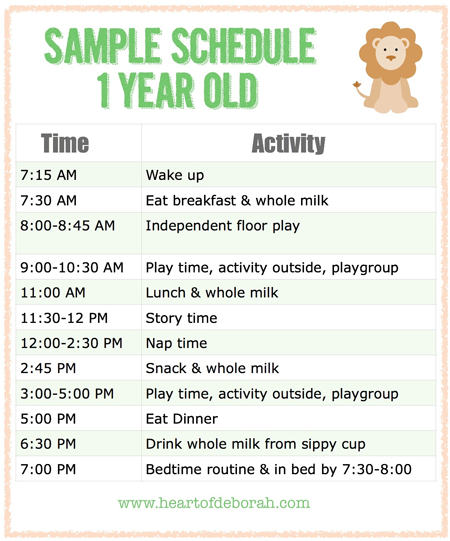
- Serve it to your baby.
Feeding Tips for Parents
If you’re trying to feed your baby, you want to make sure you do it right. Learn about feeding tips and more below:
1. When to Feed
These tips will help you understand when to feed your baby:
- Aim for two feedings a day for breastmilk/formula. Along with pureed and solid foods, your baby should be getting six meals a day in total.
- Start giving solid foods slowly. Waiting too long to start can cause feeding problems later on.
- Give solids in the morning and solids again during the evenings. Start with little amounts and increase the quantity gradually as you continue breastfeeding. If your baby cries or is famished, don’t give him solids; breastfeed him instead.
- Always look for their behavioral and emotional cues before feeding. Experiment with finger foods for snacks and make mealtimes enjoyable.
2. How to Feed
Here is what you should do when you start feeding your baby:
- Make sure your baby is seated comfortably and upright.
 Use a belt to fasten so that they don’t fall off the chair when you’re not watching.
Use a belt to fasten so that they don’t fall off the chair when you’re not watching. - Scoop out the pureed food using a spoon and gently bring it close to their mouth
- Let them taste it. If they are in the mood to eat, they will eat it.
- Don’t wait too long before feeding because your child won’t understand what you’re doing. But don’t push the spoon into their mouth either. Place it on their lips and see how they respond.
- If your baby doesn’t feel like eating, don’t force them. Try again later. Feeding times should feel pleasant and natural.
- Sit down with your family along with the baby at the dinner table during meal times. It’s a great way to bond and encourage them to eat.
Watching your six-month-old baby grow into a healthy child can be a wonderful experience. Be sure to check if they are gaining weight steadily and take time with your meal prep and planning. By adding a variety of easily digestible foods and following simple but consistent routines, you’ll soon find your baby eating loads of healthy foods in no time.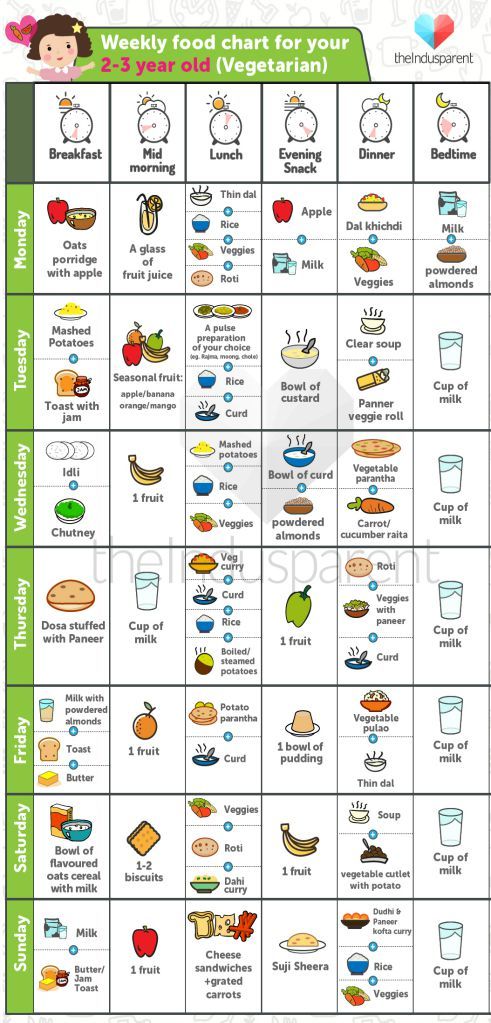
Also Read:
Baby Food and Nutrition: 6 to 12 Months
Homemade Baby Food Ideas – Benefits & Recipes
Menu Planning for Babies
Diet for a 4-6 month old baby
Your baby is already 4 months old. He has noticeably grown up, become more active, is interested in objects that fall into his field of vision, carefully examines and reaches for them. The emotional reactions of the child have become much richer: he smiles happily at all the people whom he often sees more and more often, makes various sounds.
You are still breastfeeding your baby or have had to switch to mixed or formula feeding. The child is actively growing, and only with breast milk or infant formula, he can no longer always get all the necessary nutrients. And that means it's time to think about complementary foods.
The optimal time to start its introduction is between 4 and 6 months, regardless of whether the baby is receiving breast milk or formula. This is the time when children respond best to new foods. Up to 4 months, the child is not yet ready to perceive and digest any other food. And with the late introduction of complementary foods - after 6 months, children already have significant deficiencies of individual nutrients and, first of all, micronutrients (minerals, vitamins, long-chain polyunsaturated fatty acids, etc.). In addition, toddlers at this age often refuse new foods, they have delayed development of chewing skills for thick foods, and inadequate eating habits are formed. It is important to know that, as strange as it may seem at first glance, with a delayed appointment of complementary foods, allergic reactions more often occur on them.
Up to 4 months, the child is not yet ready to perceive and digest any other food. And with the late introduction of complementary foods - after 6 months, children already have significant deficiencies of individual nutrients and, first of all, micronutrients (minerals, vitamins, long-chain polyunsaturated fatty acids, etc.). In addition, toddlers at this age often refuse new foods, they have delayed development of chewing skills for thick foods, and inadequate eating habits are formed. It is important to know that, as strange as it may seem at first glance, with a delayed appointment of complementary foods, allergic reactions more often occur on them.
When is it advisable to introduce complementary foods as early as 4 months, and when can you wait until 5.5 or even 6 months? To resolve this issue, be sure to consult a pediatrician.
As a rule, at an earlier age (4 - 4.5 months), complementary foods are introduced to children at risk of developing iron deficiency anemia, as well as children with insufficient weight gain and with functional digestive disorders.
The optimal time to start complementary foods for a healthy baby is between 5 and 5.5 months of age.
The World Health Organization recommends that breastfed babies should be introduced to complementary foods from 6 months of age. From the point of view of domestic pediatricians, which is based on extensive practical experience and scientific research, this is possible only in cases where the child was born on time, without malnutrition (since in these cases the mineral reserves are very small), he is healthy, grows well and develops. In addition, the mother must also be healthy, eat well and use either specialized enriched foods for pregnant and lactating women, or vitamin and mineral complexes in courses. Such restrictions are associated with the depletion of iron stores even in an absolutely healthy child by 5-5.5 months of age and a significant increase in the risk of anemia in the absence of complementary foods rich or fortified with iron. There are other deficits as well.
The first complementary food can be vegetable puree or porridge, fruit puree is better to give the baby later - after tasty sweet fruits, children usually eat vegetable puree and cereals worse, often refuse them altogether.
Where is the best place to start? In cases where the child has a tendency to constipation or he puts on weight too quickly, preference should be given to vegetables. With a high probability of developing anemia, unstable stools and small weight gains - from baby cereals enriched with micronutrients. And if you started introducing complementary foods with cereals, then the second product will be vegetables and vice versa.
If the first complementary food is introduced at 6 months, it must be baby porridge enriched with iron and other minerals and vitamins, the intake of which with breast milk is no longer enough.
Another important complementary food product is mashed meat. It contains iron, which is easily absorbed. And adding meat to vegetables improves the absorption of iron from them.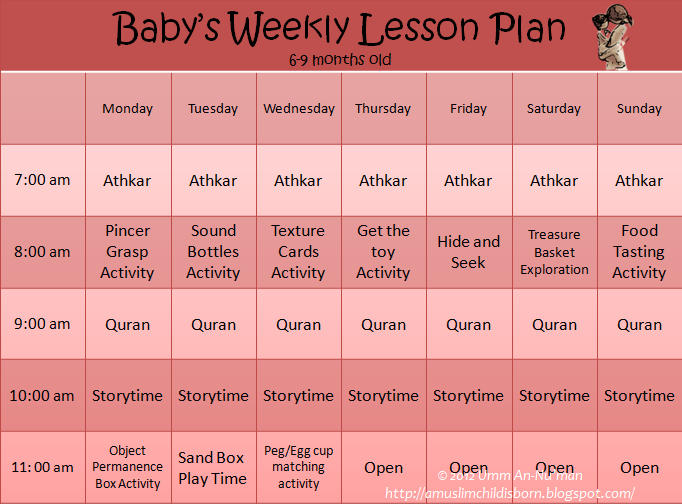 It is advisable to introduce meat puree to a child at the age of 6 months. Only the daily use of children's enriched porridge and meat puree can satisfy the needs of babies in iron, zinc and other micronutrients.
It is advisable to introduce meat puree to a child at the age of 6 months. Only the daily use of children's enriched porridge and meat puree can satisfy the needs of babies in iron, zinc and other micronutrients.
But it is better to introduce juices later, when the child already receives the main complementary foods - vegetables, cereals, meat and fruits. After all, complementary foods are needed so that the baby receives all the substances necessary for growth and development, and there are very few in their juices, including vitamins and minerals.
Juices should not be given between feedings, but after the child has eaten porridge or vegetables with meat puree, as well as for an afternoon snack. The habit of drinking juice between meals leads to frequent snacking in the future, a love of sweets is instilled, children have more tooth decay and an increased risk of obesity.
With the start of the introduction of complementary foods, the child is gradually transferred to a 5-time feeding regimen.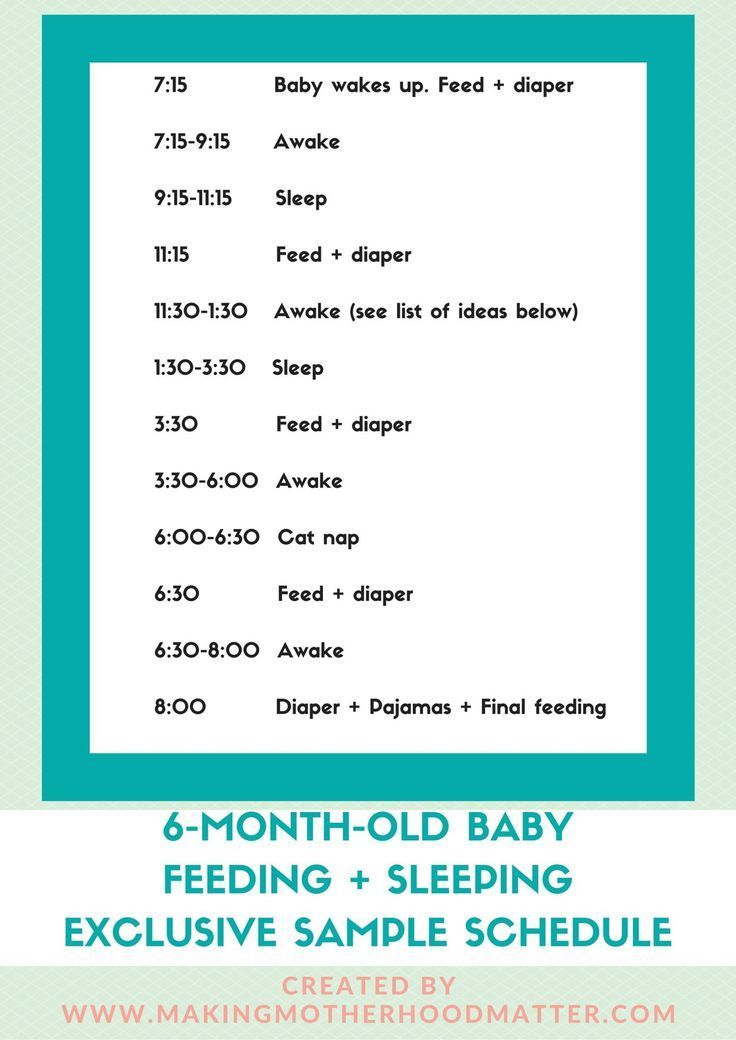
Rules for the introduction of complementary foods:
- preference should be given to baby products of industrial production, they are made from environmentally friendly raw materials, have a guaranteed composition and degree of grinding
- Complementary foods should be offered to the baby by spoon at the start of feeding, before breastfeeding (formula feeding)
- the volume of the product increases gradually, starting with ½ - 1 spoon, and in 7 - 10 days we bring it to the age norm, subsequent products within the same group (cereals from other cereals or new vegetables)
- can be entered faster, in 5 - 7 days
- start introduction with monocomponent products
- it is undesirable to give a new product in the afternoon, it is important to follow how the child reacts to it
- do not introduce new products in the event of acute illnesses, as well as before and immediately after prophylactic vaccination (should be abstained for several days)
When introducing a new type of complementary food, first try one product, gradually increasing its amount, and then gradually “dilute” this product with a new one. For example, vegetable complementary foods can be started with a teaspoon of zucchini puree. During the week, give the baby only this product, gradually increasing its volume. After a week, add a teaspoon of mashed broccoli or cauliflower to the zucchini puree and continue to increase the total volume every day. Vegetable puree from three types of vegetables will be optimal. The portion should correspond to the age norm. Over time, you can replace the introduced vegetables with others faster.
For example, vegetable complementary foods can be started with a teaspoon of zucchini puree. During the week, give the baby only this product, gradually increasing its volume. After a week, add a teaspoon of mashed broccoli or cauliflower to the zucchini puree and continue to increase the total volume every day. Vegetable puree from three types of vegetables will be optimal. The portion should correspond to the age norm. Over time, you can replace the introduced vegetables with others faster.
After the introduction of one vegetable (bringing its volume to the required amount), you can proceed to the intake of porridge, and diversify the vegetable diet later.
If the child did not like the dish, for example, broccoli, do not give up and continue to offer this vegetable in a small amount - 1-2 spoons daily, you can not even once, but 2-3 times before meals, and after 7 - 10, and sometimes 15 days, the baby will get used to the new taste. This diversifies the diet, will help to form the right taste habits in the baby.
Spoon-feeding should be done with patience and care. Forced feeding is unacceptable!
In the diet of healthy children, porridge is usually introduced after vegetables (with the exception of healthy breastfed children, when complementary foods are introduced from 6 months). It is better to start with dairy-free gluten-free cereals - buckwheat, corn, rice. At the same time, it is important to use porridge for baby food of industrial production, which contains a complex of vitamins and minerals. In addition, it is already ready for use, you just need to dilute it with breast milk or the mixture that the baby receives.
Children suffering from food allergies are introduced complementary foods at 5-5.5 months. The rules for the introduction of products are the same as for healthy children, in all cases it is introduced slowly and begins with hypoallergenic products. Be sure to take into account individual tolerance. The difference is only in the correction of the diet, taking into account the identified allergens. From meat products, preference should first be given to mashed turkey and rabbit.
From meat products, preference should first be given to mashed turkey and rabbit.
Diets for different age periods
Explain how you can make a diet, it is better to use a few examples that will help you navigate in compiling a menu specifically for your child.
From 5 months, the volume of one feeding is on average 200 ml.
Option 1.
If your baby started receiving complementary foods from 4-5 months, then at 6 months his diet should look like this:
| I feeding 6 hours | Breast milk or VHI* | 200 ml |
| II feeding 10 hours | Dairy-free porridge** Supplementation with breast milk or VHI* | 150 g 50 ml |
| III feeding 14 hours | Vegetable puree Meat puree Vegetable oil Supplemental breast milk or VHI* | 150 g 5 - 30 g 1 tsp 30 ml |
| IV feeding 18 hours | Fruit puree Breast milk or VHI* | 60 g 140 ml |
| V feeding 22 hours | Breast milk or VHI* | 200 ml |
* - infant formula
** - diluted with breast milk or VHI
Option 2.
* - infant formula Option 3. : ** - diluted with breast milk Up to 7 months, increase the volume of porridge and vegetable puree to 150 g and introduce fruit puree. The materials were prepared by the staff of the Healthy and Sick Child Nutrition Laboratory of the National Research Center for Children's Health of the Ministry of Health of Russia and are based on the recommendations given in the National Program for Optimizing the Feeding of Children in the First Year of Life in the Russian Federation, approved at the XV Congress of Pediatricians of Russia (02.2009d.) From 6 to 12 months, your baby develops at an incredible pace. It is during this period that his body needs a sufficient amount of nutrients and trace elements. The right diet will help provide your little one with the necessary nutrients and energize them to explore the world around them and gain new skills! In order to properly build a diet from 6 months old, we have prepared approximate menus for a child, broken down by months, and the feeding table itself from 4 months old can be downloaded here. Menu at 6 months Menu at 7 months Menu at 8 months Menu at 9 months Menu at 10 months Menu at 11 months Menu at 12 months At 6 months, the baby's diet contains monocomponent vegetable purees (broccoli, zucchini, cauliflower), 1-2 types of porridge, monocomponent meat puree and children's cottage cheese. 6.00 Breast milk, 200 gr (until saturation) 09:00-09:30 Dairy-free porridge 10-150 gr (depending on the introduction of complementary foods) + breast milk at the request of the child 13:00-13:30 Vegetable puree 10-150 gr, meat puree, e.g. Hamé Turkey, 10-30 gr (depending on complementary foods) + breast milk at the request of the child 18:00-18:30 Cottage cheese 10-40 gr, fruit puree, e.g. Hamé Apple, 10-40 gr (depending on complementary foods) + breast milk (until full) 21:00-21:30 Breast milk, 200 gr (until saturation) 00:00 Breast milk, 200 gr (until saturation) Vegetable oil can be added to vegetables and porridge. By 7 months, the volume of complementary foods increases, new types of meat, vegetables and fruits are introduced. Also in the diet of the child appears yolk. 6.00 Breast milk, 200 gr (until saturation) 09:00-09:30 Dairy-free porridge 150 gr + breast milk at the request of the child 13:00-14:00 Vegetable puree 150-170 gr, meat puree, e.g. Hamé Veal, 30 gr, 1/4 egg yolk + breast milk at the request of the child 18:00-18:30 Fruit and cottage cheese puree, e.g. Hamé Apple with apricot and cottage cheese, 80 g + breast milk (to saturation) 21:00-21:30 Breast milk, 200 gr (until saturation) 00:00 Breast milk, 200 gr (until saturation) You can add butter or vegetable oil to vegetables and porridge. From 8 months you can introduce baby purees with fish and meat purees with the addition of offal. You can also start offering fruit in a nibbler so your little one can scratch their teeth and try new flavors. 6.00 Breast milk, 200 gr (until saturation) 09:00-09:30 Milk/dairy-free porridge 150g, fruit puree, e.g. Hamé Apple with blueberries, 40g + breast milk of your choice 13:00-14:00 Vegetable puree 150 gr, meat puree, e.g. Hamé Beef with tongue, 50 gr, 1/2 egg yolk + breast milk on request 18:00-18:30 Fruit and cottage cheese puree, e.g. Hamé Apple with peach and cottage cheese, 80 g + breast milk (to saturation) 21:00-21:30 Porridge with butter 60 gr + breast milk (until full) 23:30-00:00 Breast milk, 200 gr (until saturation) A more satisfying dinner with the addition of porridge contributes to sound sleep without frequent awakenings for feeding. The daily menu is filled with new types of products from all categories: fish purees, sour-milk products and cereals. 6.00 Breast milk, 200 gr (until saturation) 09:00-09:30 Milk/dairy-free porridge 150 gr, fruit puree, e.g. Hamé Apple with raspberries, 40 gr + breast milk at the request of the child 13:00-14:00 Vegetable puree 150 gr, fish or meat puree, e.g. Hamé Chicken, 60 gr, 1/2 egg yolk + breast milk as desired by the child 18:00-18:30 Fruit and cottage cheese puree, e.g. Hamé Apple with cottage cheese, 100 gr + breast milk (to saturation) 21:00-21:30 Porridge with butter 60 gr + breast milk (until full) 23:30-00:00 Breast milk, 200 gr (until saturation) At 9 months, you can enter baby cookies and up to 10 grams of bread. At this age, the baby’s menu can be slightly diversified with some dishes from the general table: weak broths, cottage cheese puddings or casseroles, vegetables and fruits, grated on a fine grater. 6.00 Breast milk, 200 gr (until saturation) 09:00-09:30 Milk/dairy-free porridge 150 gr, fruit puree, e.g. Hamé Apple and Carrot, 60 gr + breast milk on request 13:00-14:00 Vegetable puree 150 gr, fish or meat puree, e.g. Hamé Beef with heart, 70 gr, 1/2 egg yolk + breast milk as desired by the child 18:00-18:30 Cottage cheese 50g, fruit puree, e.g. Hamé Apple & Strawberry, 80g + breast milk (to saturation) 21:00-21:30 Porridge with butter 60 gr + breast milk (until full) 23:30-00:00 Breast milk, 200 gr (until saturation) During the day, you can offer children's cookies and up to 10 grams of bread. At this age, the baby makes the first attempts to eat on its own. Parents can help by offering chopped soft fruits and vegetables. Steamed meat dishes are also suitable: meatballs, meatballs, fish fillet or finely chopped boiled chicken. 6.00 Breast milk, 200 gr (until saturation) 09:00-09:30 Milk/dairy-free porridge 150 gr, fruit puree, e.g. Hamé Apple and banana, 60 gr + breast milk of the child's choice 13:00-14:00 Vegetable puree 150 gr, fish or meat puree, e.g. Hamé Beef with liver, 80 gr, 1/2 egg yolk + breast milk on request 18:00-18:30 Fruit and cottage cheese puree, e.g. Hamé Apple with blueberries and cottage cheese, 100 gr + breast milk (to saturation) 21:00-21:30 Porridge with butter 60 gr + breast milk (until full) 23:30-00:00 Breast milk, 200 gr (until saturation) During the day, you can offer children's cookies and up to 10 grams of bread. At this age, parents begin to introduce the baby to a common table adapted to his needs, gradually expanding the diet with new tastes and textures of products. You can offer your child baby vermicelli, greens, forest and garden berries. Meat puree can be coarsely ground, your baby will gobble up meatballs and cutlets with great pleasure. 6.00 Breast milk, 200 gr (until saturation) 09:00-09:30 Milk/dairy-free porridge 150g, fruit puree, e.g. Hamé Apple with strawberries, 80g + breast milk of your choice 13:00-14:00 Vegetable puree 150 gr, fish or meat puree, e.g. Hamé Beef with chicken and beef 80 gr, 1/2 egg yolk + breast milk as desired by the child 18:00-18:30 Fruit and cottage cheese puree, e. I feeding
6 hours Breast milk or VHI* 200 ml II feeding
10 hours Dairy-free porridge**
Fruit puree 150 g
20 g III feeding
14 hours Vegetable puree
Meat puree Vegetable oil
Fruit juice 150 g
5 - 30 g
1 tsp
60 ml IV feeding
18 hours Fruit puree
Breast milk or VHI* 40 g
140 ml V feeding
22 hours Breast milk or VHI* 200 ml
** - diluted with breast milk or VMS 
I feeding
6 hours Breast milk II feeding
10 hours Dairy-free porridge**
Breast milk supplement 100 g III feeding
14 hours Vegetable puree
Meat puree Vegetable oil
Breast milk supplement 100 g
5 - 30 g
1 tsp IV feeding
18 hours Breast milk V feeding
22 hours Breast milk 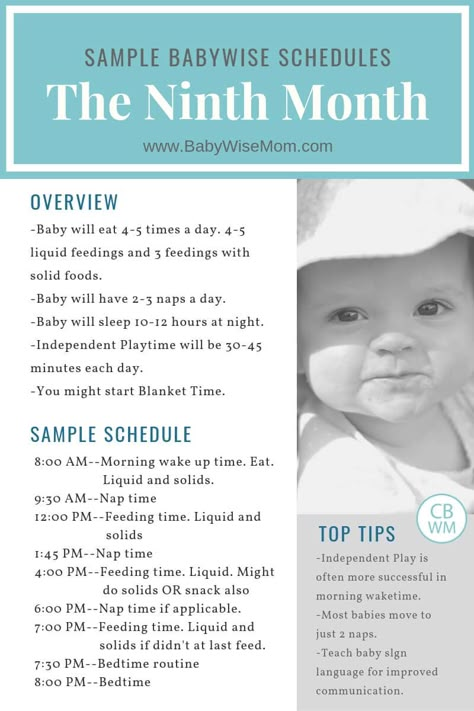
Diet for a child from 6 months to a year
Menu at 6 months


Menu at 7 months

Menu at 8 months
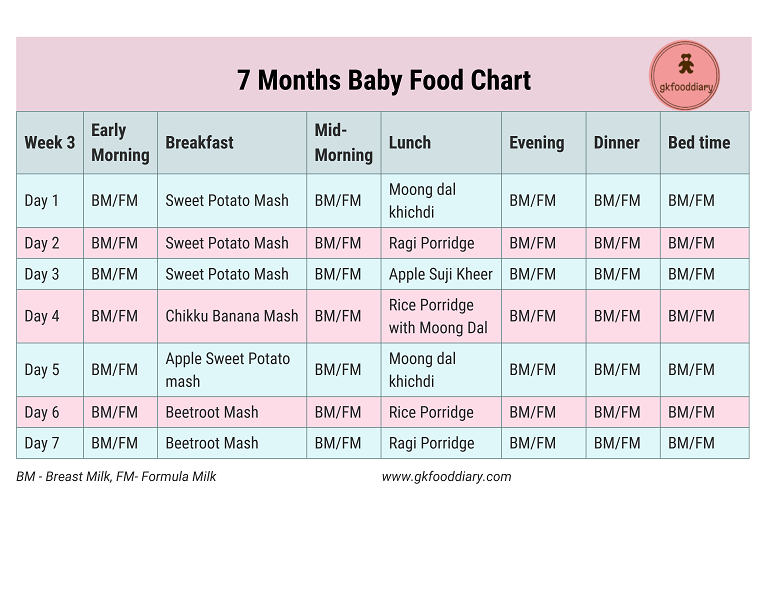
Menu at 9 months

Menu at 10 months

Menu at 11 months

Menu at 12 months
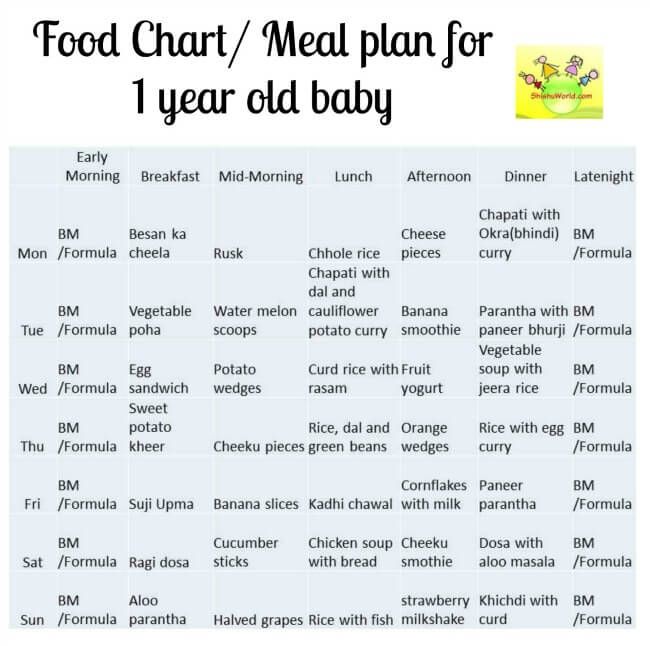
.

